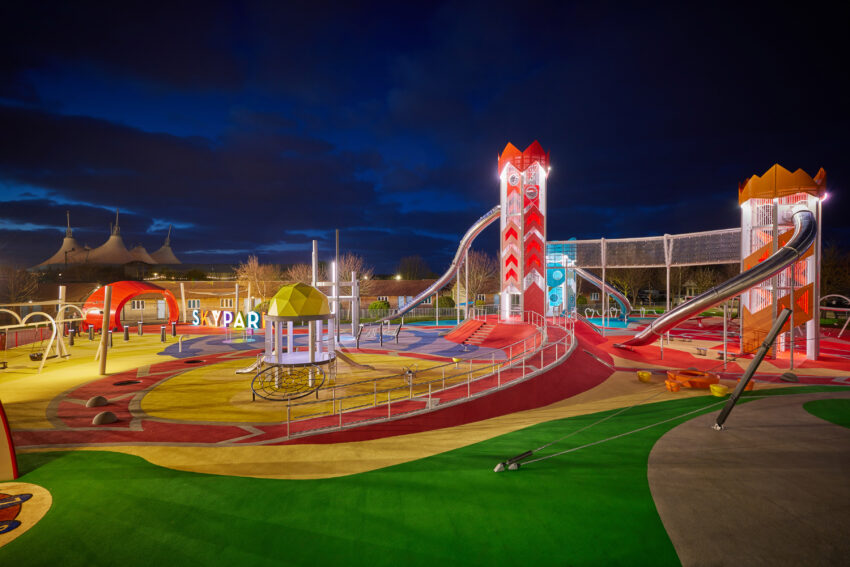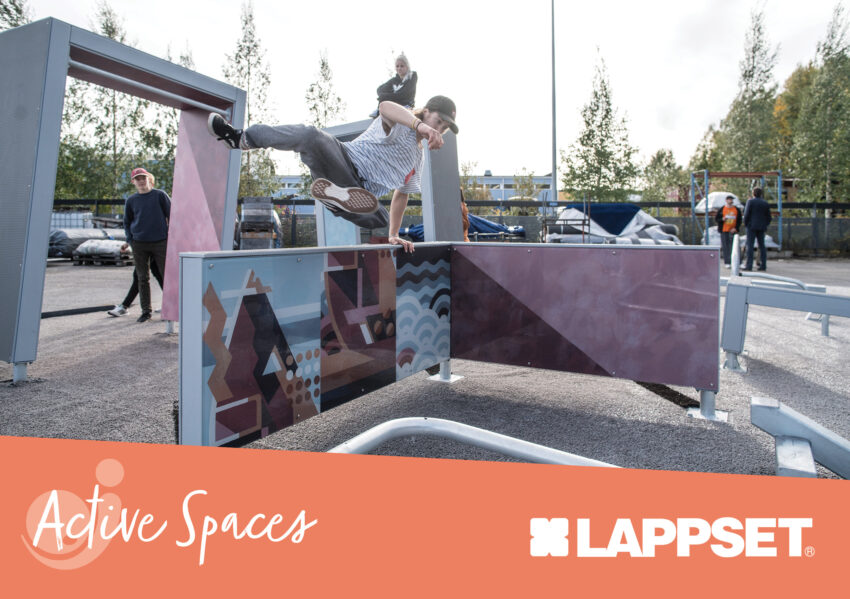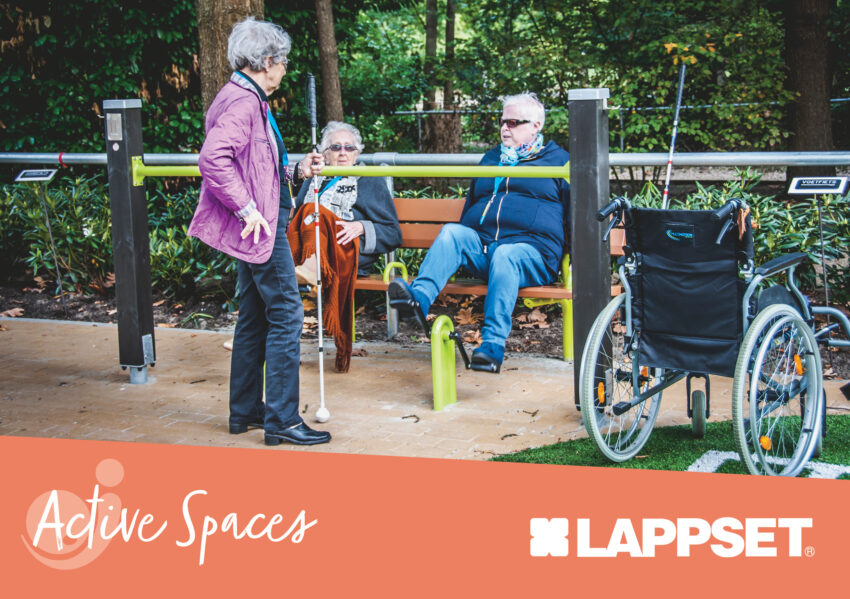CANTLEY PARK INTERACTIVE PLAY SPACE
CANTLEY PARK INTERACTIVE PLAY SPACE CANTLEY PARK INTERACTIVE PLAY SPACE THE BRIEF: The council was committed to creating a new destination play area on site
Play is integral not only to a child’s development but also to the social and economic success of our communities. Over the last decade, play and leisure activities have changed significantly in response to technology, social trends, and cultural preferences. In 2023, we must plan for how we will shape the way children use their free time outdoors as today’s investments in space can be tomorrow’s life-improving outcomes.
In this article, we look ahead to explore what’s set to change in the world of outside play this year and look at some of the trends which will impact how people interact with their outdoor environments over the coming years.

The recent focus on childhood physical activity levels, the development of LED technology, and a better understanding of the link between neurodiversity and the benefits of light play have all contributed to why playful lighting is a key trend of 2023 for play areas.
Activity levels are 15-20% higher on summer days than on winter days. It also rains for 156.2 days per year on average in Britain – fewer daylight hours and bad weather will mean children are less likely to want to play outside. This invites the suggestion that better lighting, shelter or drainage may facilitate greater physically active use of spaces.
Light is so important to children due to the fact vitamin D is crucial for the health and development of children. Light play is also a form of holistic, educational Sensory Play, and encourages critical and creative thinking.
Here are a few reasons why light should be used in outdoor play spaces:

With the current climate crisis, Jupiter must jump on the trend of prioritising biodiversity in all builds. Biodiversity is declining faster than at any time in human history and our sector has a part to play in addressing this crisis. 15% of species in the UK are threatened with extinction, with native woodland covering a mere 2.5% of our land.
Through the Environmental Act of 2021, the Government has announced that new English developments will be required to demonstrate a 10% increase in biodiversity on or near development sites.
We are building our playgrounds to fit into nature, not just destroying the land we use to build them on. We are doing this through:

Active Streets are seen as a trend due to the decline of the high street and the need to rethink their function– 50 shops a day closed in the UK in 2022. As well as this, the increase in obesity in both children and adults calls for more solutions to be made, such as the concept of whole streets being dedicated to playing and physical activity.
The all-weather skatepark named Tram Line Spot is the first UK purpose-built ‘street spot’. It is based under the tram viaduct to keep the spot dry and streetlights keep the area well-lit in the dark.
The need to create active communities goes in hand with the importance of physical activity for all ages:

Gender Inclusive designs are becoming a trend due to the number of teenage girls dropping out of sports, and the increasing need to address concerns about safety in parks.
Due to gender norms that girls are exposed to whilst growing up, it can be said that girls do not feel as though they no longer belong in parks. Many girls feel that they are unable to claim space for exercise: almost half feel excluded from their local parks, with active spaces and exercise equipment within parks typically catering to boys’ needs. Unfortunately, 59% of girls don’t feel welcome in parks because the spaces are dominated by boys.
According to Her Story, involving girls in urban development will make the city better for everyone. Girls plan and design with diversity and different needs in mind. Participatory processes are key for planning a city that works for everyone. If we let citizens that the experts rarely hear have a voice, our cities, and communities will become more inclusive, equal, and sustainable.

The power of Instagram and TikTok in documenting and photographing wow-factor places has given way to a new trend – crafting ‘wow’ factor playgrounds that entice visitors and encourage outdoor play.
So, how do you create an ‘Instagrammable’ space? Here are several ways to do so:
Kids are growing up with technology, so play spaces need to be designed to be interactive to get kids active and families playing together. YALP+ gives kids opportunities to download the free app on their mobiles and enhance their play experiences.
In conclusion, the world of outdoor play is constantly evolving, with new trends and innovations emerging all the time. Staying up to date with the latest trends in outdoor play is essential. By understanding the key trends of 2023 and beyond, you can create play spaces that are truly exceptional and provide children and families with unforgettable experiences.
Overall, the world of outdoor play is full of exciting possibilities, and by staying informed and creative, we can continue to create play areas that inspire and delight. The key to success is simply to keep an open mind, stay curious, and embrace the power of play.
Contact us HERE to find out how we can design play spaces that will create a sense of wonder for you.
CANTLEY PARK INTERACTIVE PLAY SPACE CANTLEY PARK INTERACTIVE PLAY SPACE THE BRIEF: The council was committed to creating a new destination play area on site
Promoting Inclusivity in Public Parks and Outdoor Spaces A Call to our Clients In the realm of outdoor play and recreation, a profound shift in

Introducing the UK’s most exciting playground… Jupiter Play & Leisure are delighted to have partnered with renowned holiday destination Butlin’s to design and

DESIGNING DASH PARKOUR: A HOLISTIC R&D-PROJECT Design is an empathic way of thinking and working, and in our field, designer is the cross-field intermediary who

Landscape designer Arja Paula speaks about aspects to consider when designing a Senior park. I prefer the term senior park because it is more of

Personal trainer Oona Tolppanen on why we should approach exercising playfully. Laughter is the best medicine. So it is said whenever someone cannot stop roaring

Accreditations:






Subscribe to our newsletter to keep up to date with whats happening:
Edinburgh
9 Ainslie Place
Edinburgh
EH3 6AT
Nottingham
The Coach House
2 North Road
West Bridgford
NG2 7NH